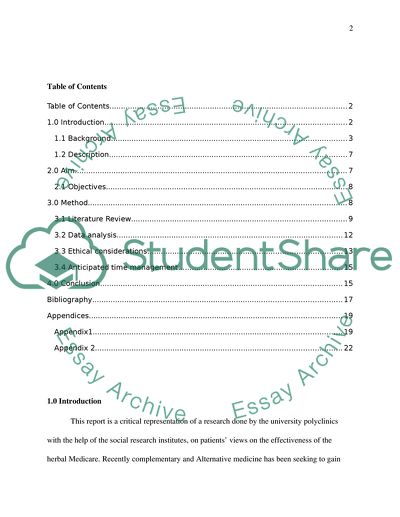Cite this document
(“Assessing Patients Feedback On Receiving Herbal Medicine Treatment Dissertation”, n.d.)
Assessing Patients Feedback On Receiving Herbal Medicine Treatment Dissertation. Retrieved from https://studentshare.org/health-sciences-medicine/1642395-a-pilot-study-to-develop-appropriate-questionnaires-for-assessing-patient-feedback-on-receiving-herbal-medicine-treatment-with-special-emphasis-on-patient-centred-care
Assessing Patients Feedback On Receiving Herbal Medicine Treatment Dissertation. Retrieved from https://studentshare.org/health-sciences-medicine/1642395-a-pilot-study-to-develop-appropriate-questionnaires-for-assessing-patient-feedback-on-receiving-herbal-medicine-treatment-with-special-emphasis-on-patient-centred-care
(Assessing Patients Feedback On Receiving Herbal Medicine Treatment Dissertation)
Assessing Patients Feedback On Receiving Herbal Medicine Treatment Dissertation. https://studentshare.org/health-sciences-medicine/1642395-a-pilot-study-to-develop-appropriate-questionnaires-for-assessing-patient-feedback-on-receiving-herbal-medicine-treatment-with-special-emphasis-on-patient-centred-care.
Assessing Patients Feedback On Receiving Herbal Medicine Treatment Dissertation. https://studentshare.org/health-sciences-medicine/1642395-a-pilot-study-to-develop-appropriate-questionnaires-for-assessing-patient-feedback-on-receiving-herbal-medicine-treatment-with-special-emphasis-on-patient-centred-care.
“Assessing Patients Feedback On Receiving Herbal Medicine Treatment Dissertation”, n.d. https://studentshare.org/health-sciences-medicine/1642395-a-pilot-study-to-develop-appropriate-questionnaires-for-assessing-patient-feedback-on-receiving-herbal-medicine-treatment-with-special-emphasis-on-patient-centred-care.


